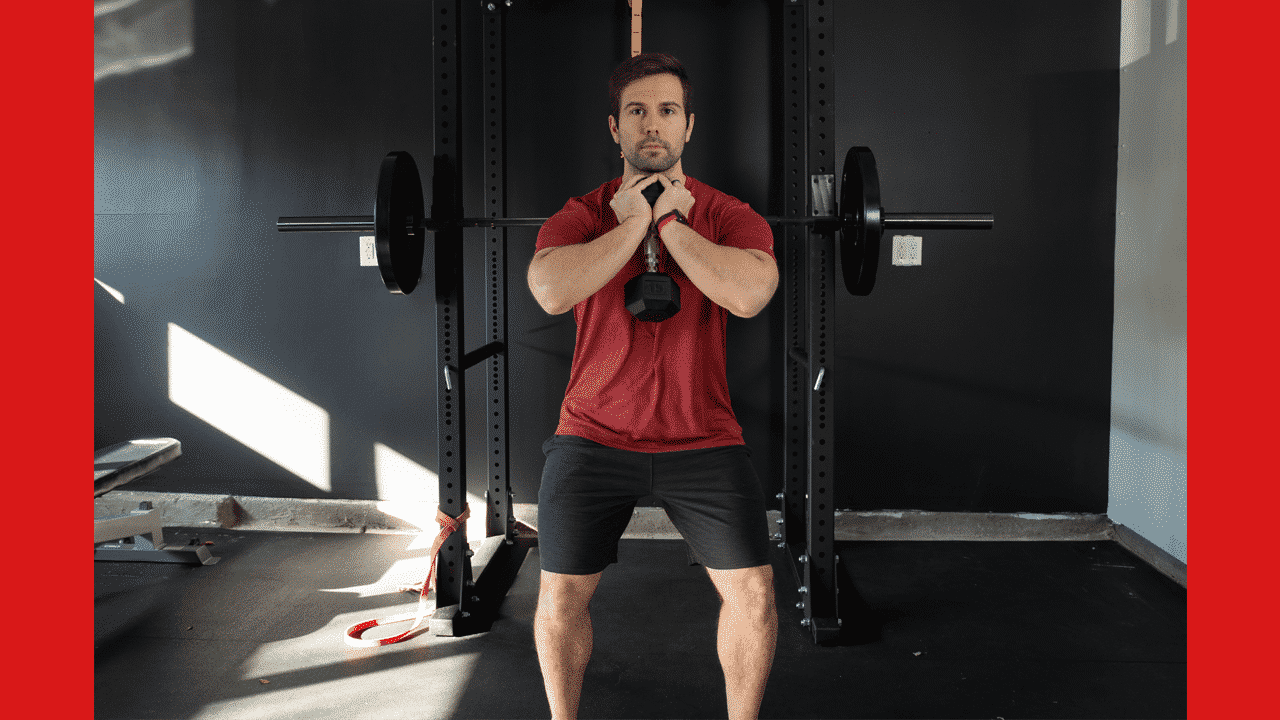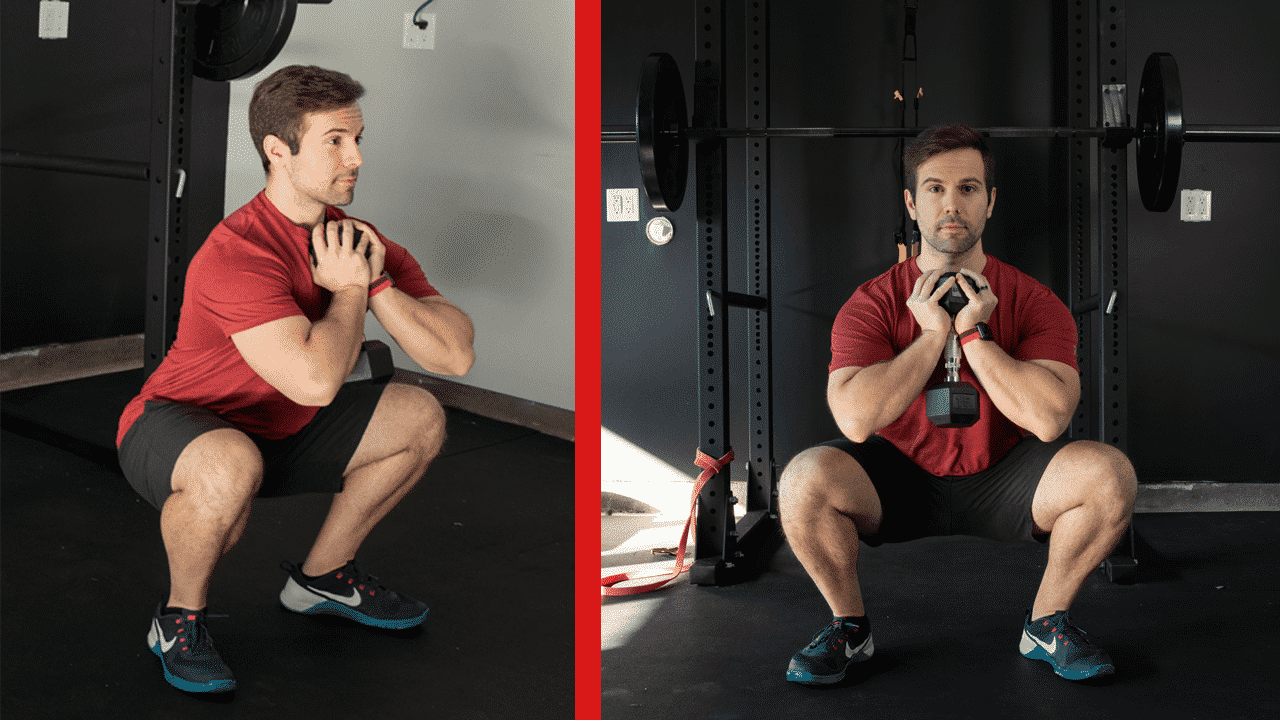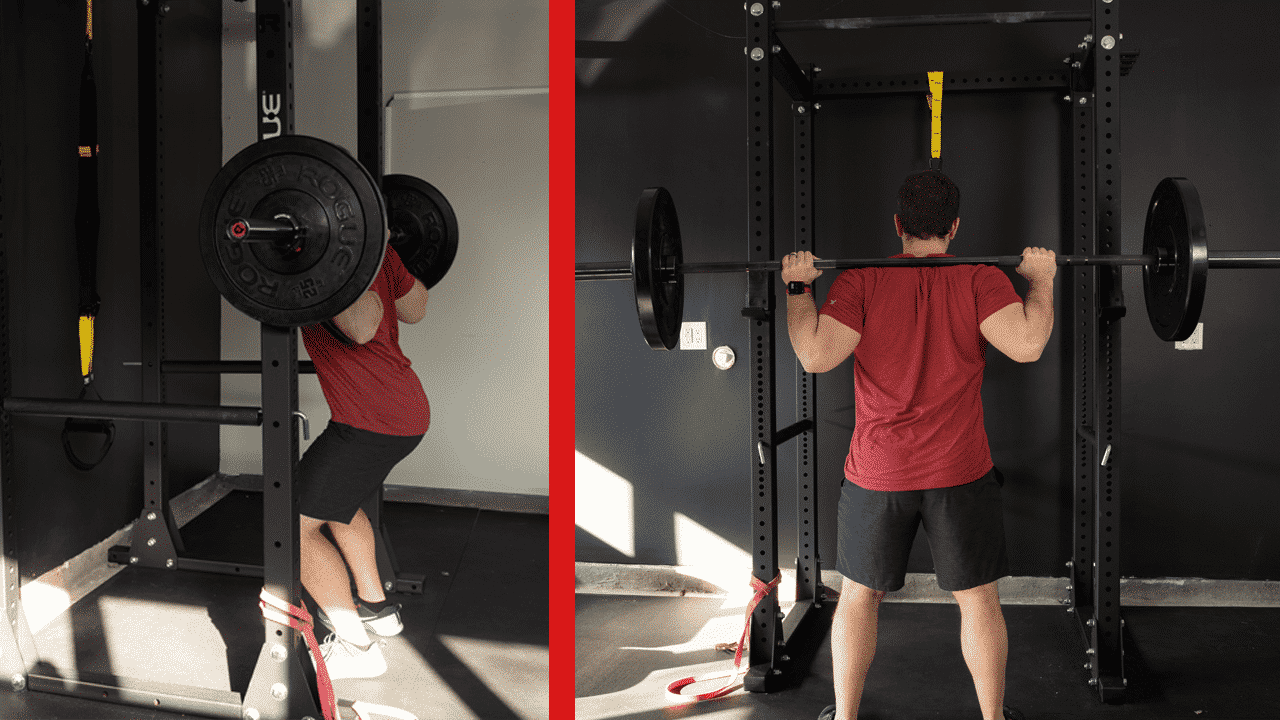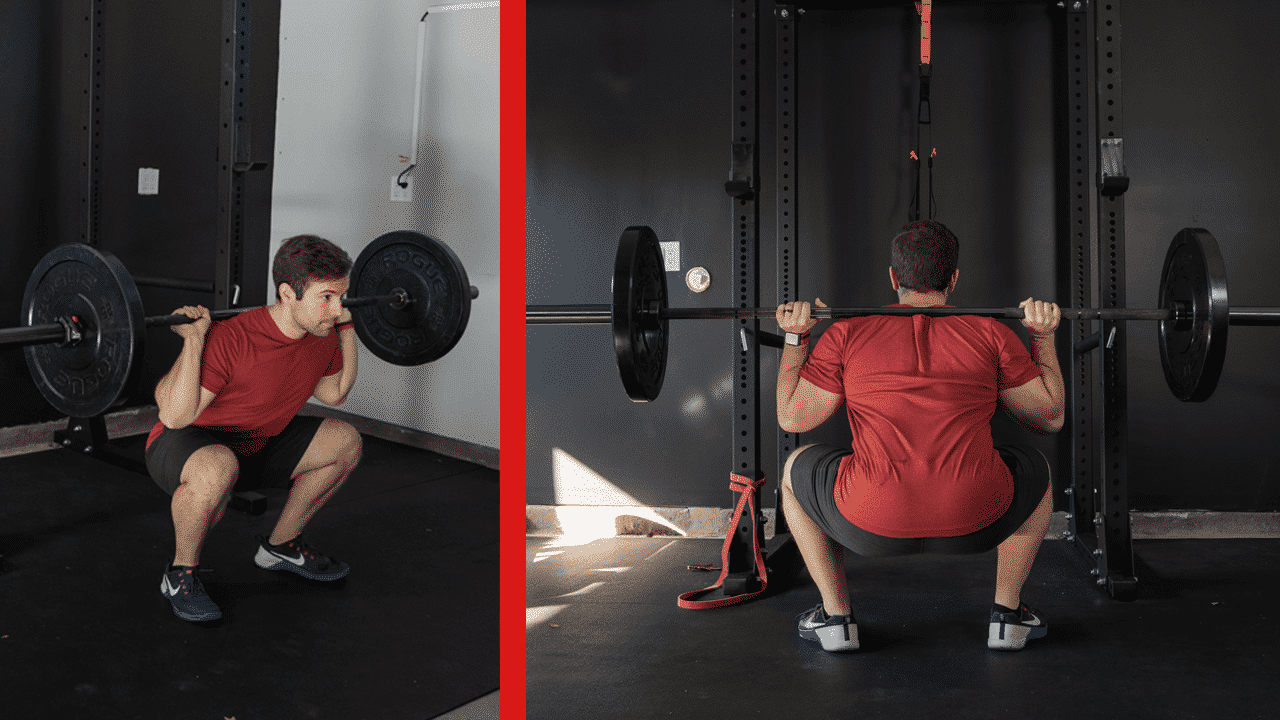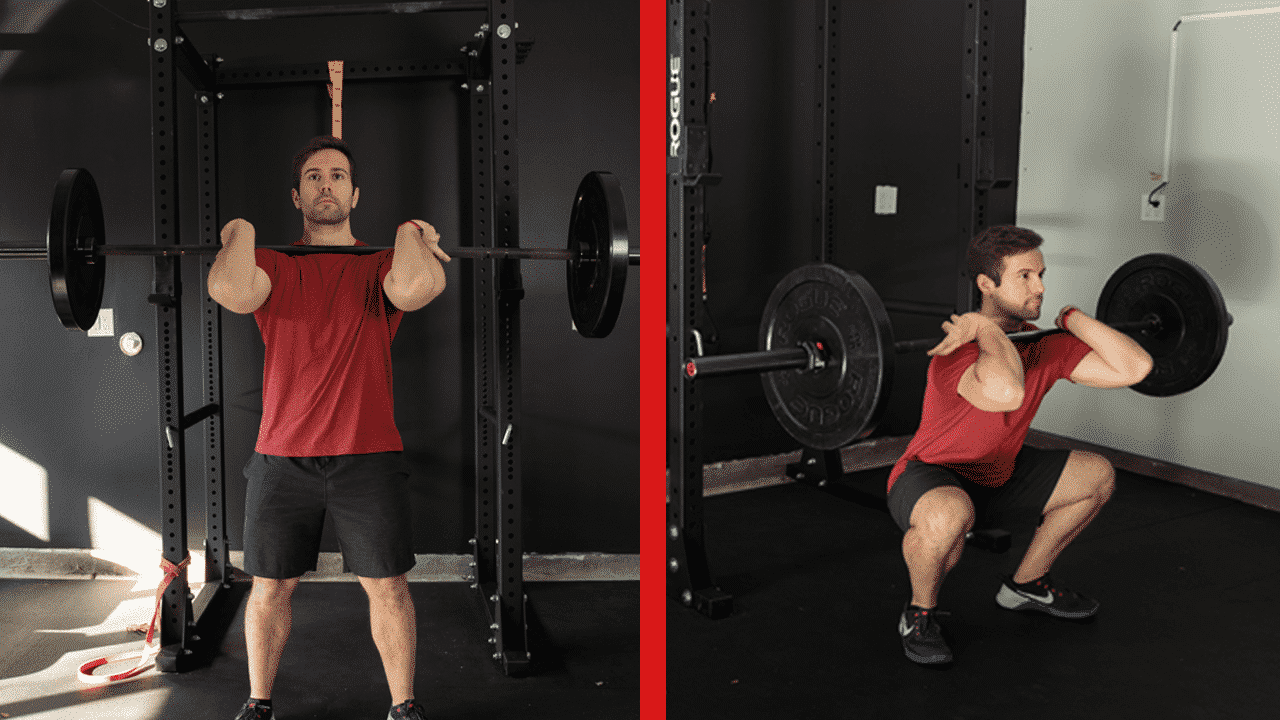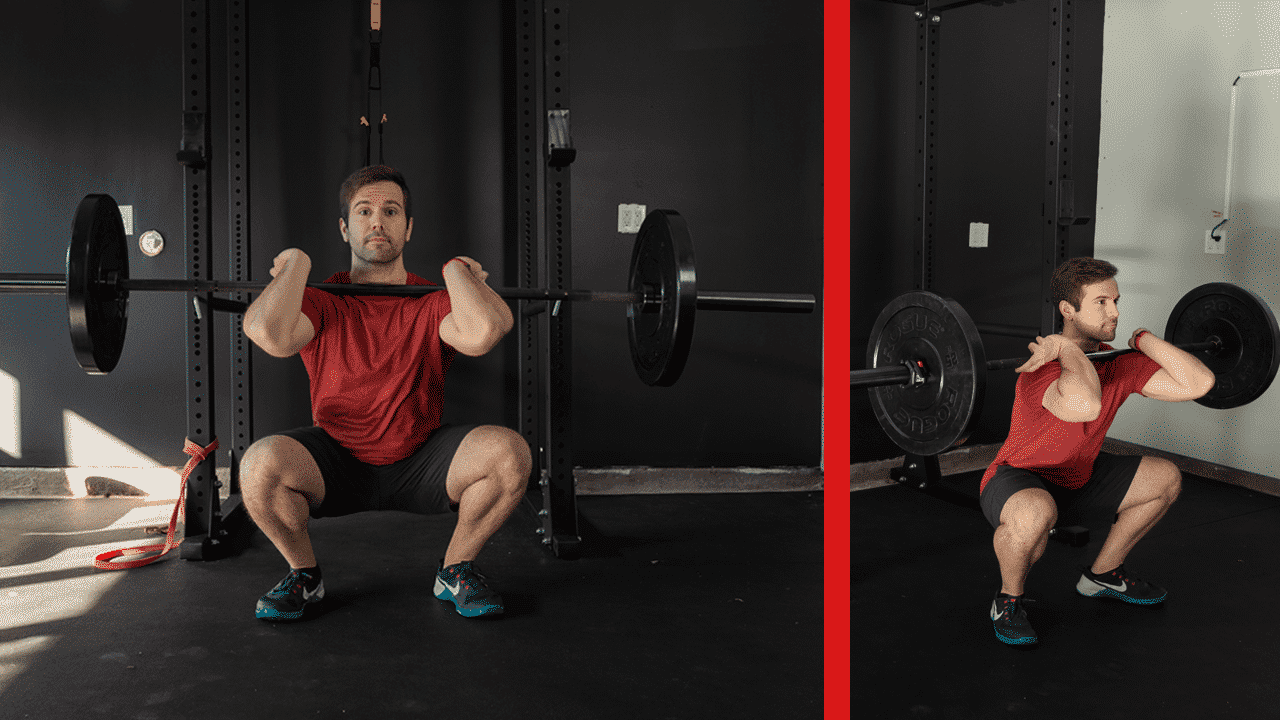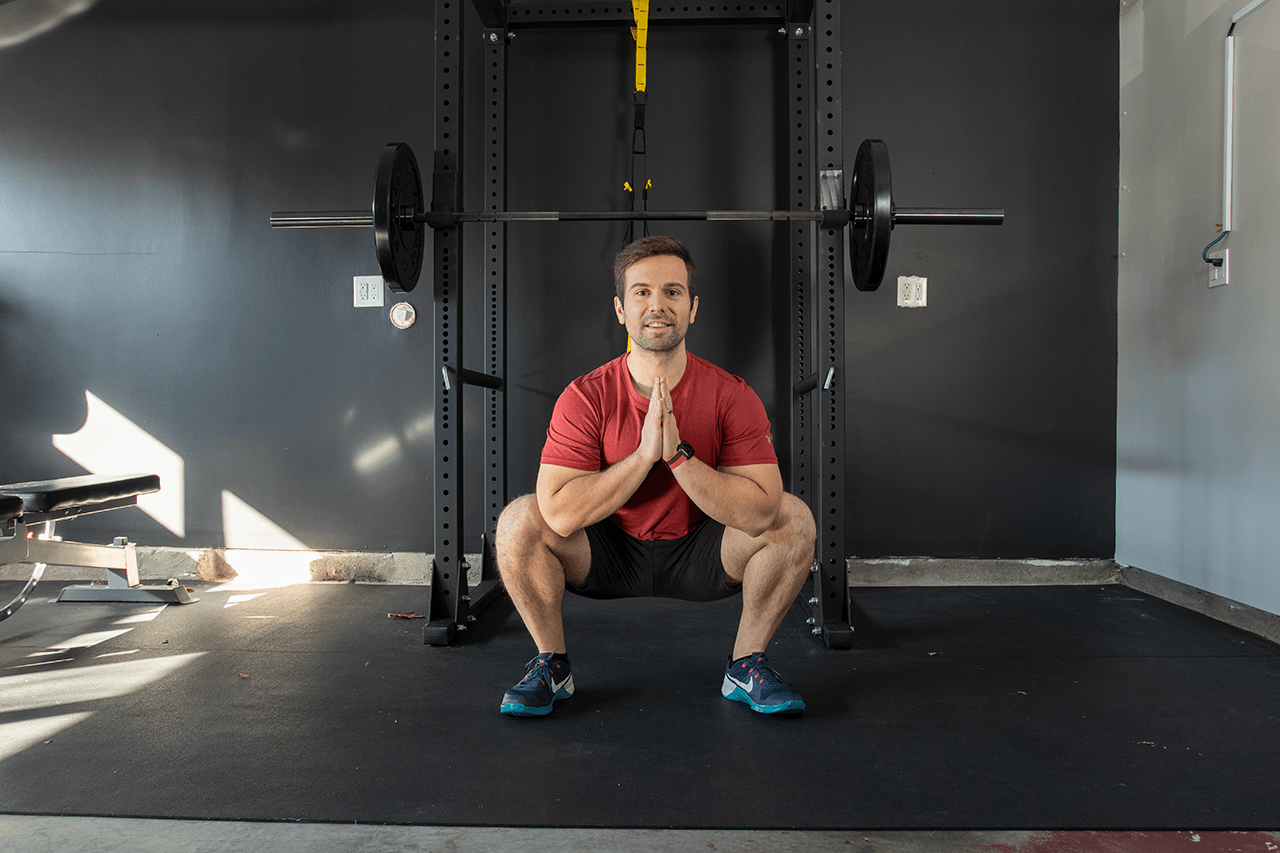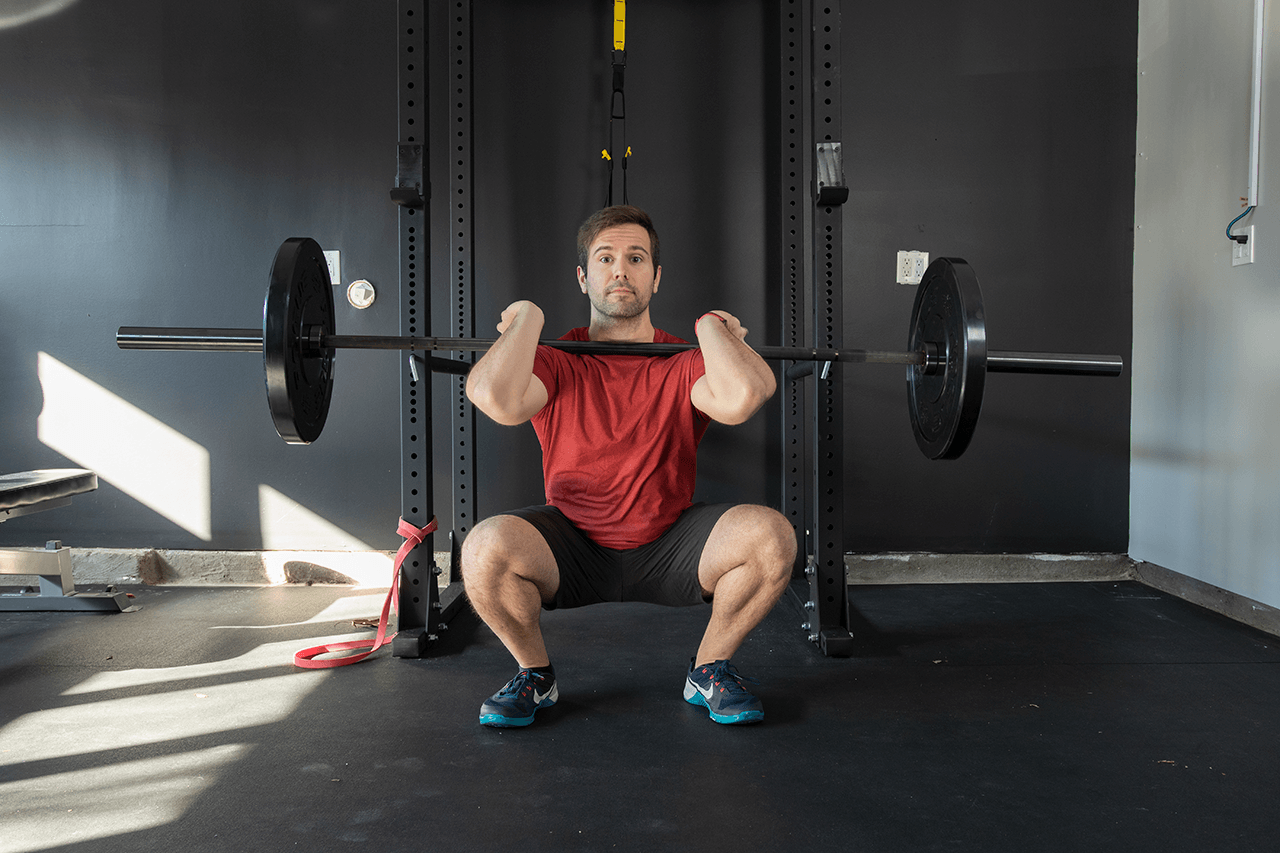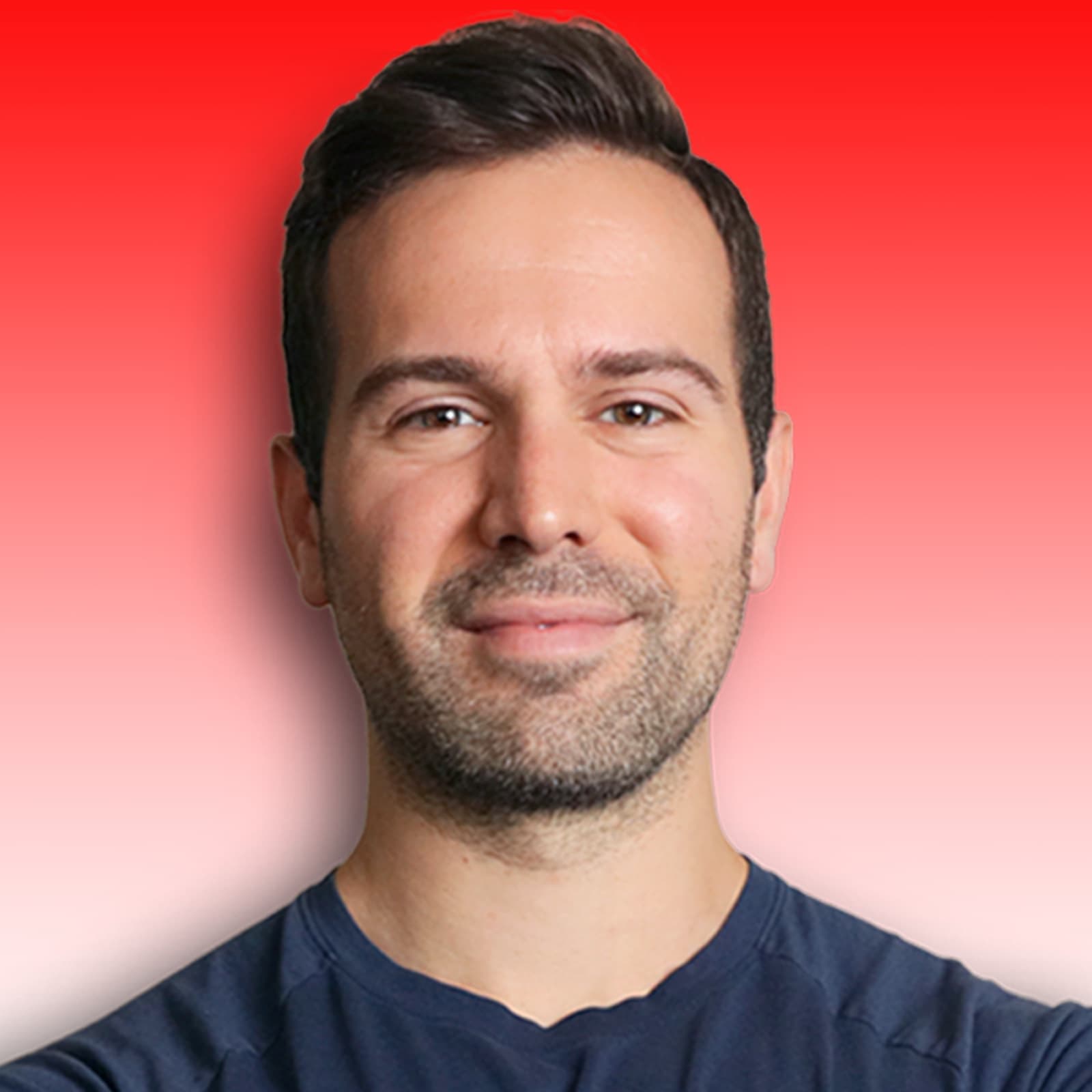The squat is one of the most beneficial exercises that you should be doing.
The problem is there are so many types of squats to choose from, and it can be intimidating even to attempt to start squatting.
This article will show you the four best squat variations, how to determine which squat is right for you, and how to perform the exercises safely and effectively.
Top 4 Squat Variations for Building Lower Body Strength
Regardless of the type of squat you incorporate into your workout routine, they all have one thing in common.
Squats strengthen every part of your leg (tendons & ligaments around the knee) and other muscles in your body.
Below are four of the best squat variations based on overall function. These are listed in the degree of difficulty to learn & execute effectively.
Also, before jumping into your squatting practice, ensure you perform a proper warm-up anytime you decide to train.
What Muscles Do Barbell Squats Work?
Squats mimic actual movement patterns that people engage with daily.
Squatting down to pick something up. Getting up & sitting down on a chair. Walking up and down the stairs. Specific athletic movements are derived from a squat.
You see my point, right?
However, my main reason for including it in all my routines (regardless of my fitness goals) is simple. I want to be able to get up and down without assistance from others in the later years of my life.
Below are the main muscles you’re working on while doing most squat variations.
Primary Muscles Worked During Barbell Squats
- Gluteus Maximus
- Quads
- Hamstrings
- Thigh Adductors
Ancillary Muscles Worked During Barbell Squats
- Core (Rectus & Transverse Abdominis, Obliques & Pelvic Floor)
- Lower Back (Multifidus & Erector spinae)
1. Bodyweight Squats
Exercise Setup
- Place your feet evenly, roughly shoulder-width apart. Keep your feet as straightforward as possible.
- Inhale deeply and tighten your core
- (Remember to tighten your core muscles by thinking about sucking your belly button into your spine)
Exercise Execution
- Engage your hips by hinging them backward & bringing your chest forward, balancing it over the middle of your feet.
- To maintain balance as you descend, keep your arms in front of you (parallel to the floor) and focus on a spot in front of you.
- You should feel stable & balanced when you reach the full depth in your squat.
- Stand back up without bouncing or jerking, and drive your feet into the floor while pushing your hip toward your starting position.
- Maintain a tight core and exhale as you stand back up.
Coaching Cues from Ant
- Control your movement speed. Do not bounce or jerk out of the bottom position of your squat.
- Aim to keep your knees centered over your feet. They should not cave inward.
- Focus on a singular spot before you to keep your head relaxed and neutral.
- Remember: Every person’s squat will vary due to differences in body types (leg length, flexibility, and stance width.
Equipment Needed
- Bodyweight Only
2. Dumbbell Squats
Exercise Setup
- Start by placing a dumbbell at waist height on a bench
- Approach the dumbbell, lower yourself into a half squat (images below)
- Place your feet evenly, roughly shoulder-width apart. Make sure your torso is upright when lifting the dumbbell into position.
- Place your hands underneath one side of the dumbbell. Imagine holding it like a goblet.
- Inhale deeply, tighten your core, and lift the dumbbell by extending your knees and hips simultaneously to stand up.
- Stand in full extension while maintaining a tight core
Exercise Execution
- Take a deep inhale to engage and tighten your core.
- Kick your hips back (just a little) while allowing your knees to flex as you descend slowly in a controlled manner.
- While keeping your torso vertical, pause once you’ve reached a comfortable depth.
- Stand back up without bouncing by driving your feet into the floor and pushing your hip back into your starting position.
- Keep a tight core and exhale as you stand up.
Coaching Cues from Ant
- Control your movement speed. Do not bounce or jerk out of the bottom position of your squat.
- Aim to keep your knees centered over your feet. They should not cave inward.
- Focus on a singular spot before you to keep your head relaxed and neutral.
- Note: Certain people have a morphology that allows them to comfortably and correctly sit into a deeper squat below parallel.
Equipment Needed
- Single and/or Pair of Dumbbells
3. Barbell Back Squats
Exercise Setup
- Start by getting under the bar and placing it between the center of your shoulders.
- (Do not place it directly on your neck. It should rest on the “shelf” between your shoulders)
- Grip the bar where it feels most comfortable. Hand placement on the bar is preferential and will differ from person to person.
- Place your feet evenly, roughly shoulder-width apart.
- Inhale deeply, tighten your core, and unrack the bar by simultaneously extending your knees and hips to stand up.
- (Remember to tighten your core muscles by thinking about sucking your belly button into your spine)
- Stand in full extension while maintaining a tight core & take 1-2 small steps backward away from the rack.
Exercise Execution
- Take a deep inhale to engage and tighten your core.
- In a controlled manner, kick your hips back while allowing your knees to flex as you descend slowly.
- Pause for a moment once your quads are about parallel with the floor.
- Stand back up without bouncing or jerking, and drive your feet into the floor while pushing your hip toward your starting position.
- Maintain a tight core and exhale as you stand back up.
Coaching Cues from Ant
- Control your movement speed. Do not bounce or jerk out of the bottom position of your squat.
- Aim to keep your knees centered over your feet. They should not cave inward.
- Focus on a singular spot before you to keep your head relaxed and neutral.
Equipment Needed
- Barbell + Weight Plates
- Squat Rack
4. Barbell Front Squats
Exercise Setup
- Start by stepping into the bar (in front of you) and keeping your knees slightly bent.
- Set the bar on your shoulders by utilizing one of two different grip choices (images below)
- Place your feet evenly, roughly shoulder-width apart. Ensure your hips are under the bar and in alignment with your shoulders.
- Inhale deeply, tighten your core, and unrack the bar by simultaneously extending your knees and hips to stand up.
- Stand in full extension while maintaining a tight core & take 1-2 small steps backward away from the rack.
Exercise Execution
- Take a deep inhale to engage and tighten your core.
- In a controlled manner, kick your hips back (just a little) while allowing your knees to flex as you descend slowly.
- While keeping your torso vertical, pause once your quads are about parallel with the floor.
- Stand back up without bouncing or jerking, and drive your feet into the floor while pushing your hip toward your starting position.
- Maintain a tight core and exhale as you stand back up.
Coaching Cues from Ant
- Control your movement speed. Do not bounce or jerk out of the bottom position of your squat.
- Aim to keep your knees centered over your feet. They should not cave inward.
- Focus on a singular spot before you to keep your head relaxed and neutral.
- Engage your abs by pulling your belly button towards your spine throughout the entire movement.
Equipment Needed
- Barbell + Weight Plates
- Squat Rack
FAQs & Possible Concerns
Below are just a few frequently asked questions we’ve gathered that you might still be wondering about after reading this post.
How Do You Properly Do a Squat?
It depends on the squat your attempt to do. The movement patterns in most squat variations are similar, but there are some differences.
To learn how to do a squat correctly, you must first decide which type of squat is best for your current experience level.
So, are you wondering how to perform a barbell back squat, barbell front squat, dumbbell/goblet squat, and/or a bodyweight squat?
Then refer to the 4 best squat variations sections above.
What Is The Best Squat Position?
I often hear which is better to do: squat to full depth or squat only to parallel. It depends.
- Is your purpose of enhancing your strength and performance for a specific sport?
- Are you squatting simply to get stronger and build more muscle?
Certain sports benefit from training full-depth squats since it translates to sport-specific movements.
On the other hand, if your goal is to improve your strength, build muscle and increase longevity, then, perhaps, squatting parallel, makes more sense for you.
Final Thoughts
Squats are one of (if not) the essential exercises that I believe everyone should be doing (unless otherwise contraindicated).
This compound movement utilizes almost every muscle in your body. It’s also an exercise that mimics natural movement patterns we engage with daily (literally).
Remember the essentials above, and you’ll be able to master a proper squat form, move efficiently, and see better results in the long run.
Hope you have an awesome workout!



